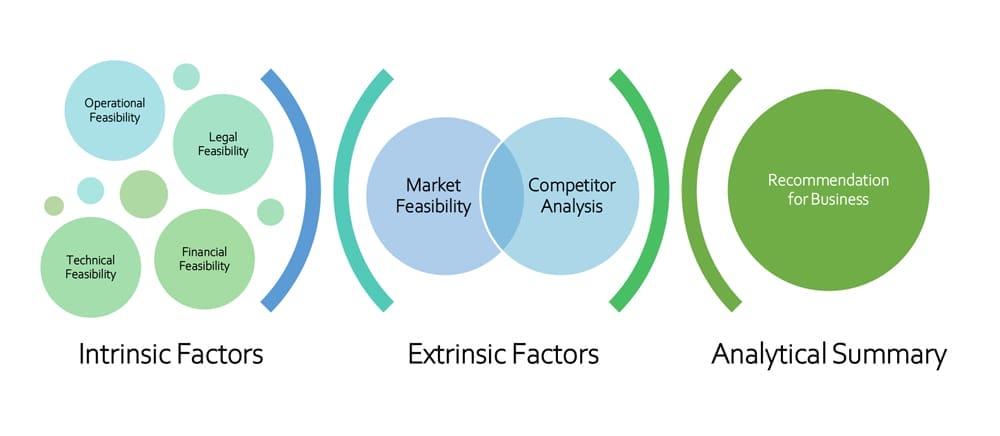Should I invest in Life Insurance?
Reasons to buy insurance are different for everyone. But the decision to purchase insurance is, at its core, all about being prepared.
Buying life insurance protects your spouse and children from the potentially devastating financial losses that could result if something happened to you. With life increasing its pace and uncertainties rising by the day, every family needs a life cover.
So how is Insurance like Business Feasibility Research?
As the underline value while investing in the insurance is being prepared and plan-ahead, likewise, market feasibility research is a tool every business or investor group can use to plan-ahead and be prepared before every major project venture or investment.
While conducting feasibility research, the critical question is, “How well the business project will perform? And does it make good business sense?” In other words, forecasting a project or product’s practicality and growth trajectory.
If you proceed without conducting a feasibility analysis, you’re exposing yourself up to unnecessary risk. A feasibility study mitigates that risk just like an insurance policy does.
Guide to Market Feasibility Analysis
A feasibility study will help you determine the specific factors that will affect your project before committing or investing.
So, while it’s appealing to overlook and think you can do without, remember that it’s easier to address issues before you jump in than it is after. With uncertainties rising by the day and dynamically evolving market conditions it is sensible to do a feasibility study of your target market before entering the market.
A feasibility analysis is conducted to analyze all the relevant factors tied to a project. These include technical, economic, legal, and scheduling considerations to determine the likelihood of successful completion of the project by the organization. This helps to analyze if the project is financially viable to support investment decisions.
Benefits of Feasibility Research
- Evade project failure through rational assessment.
- Provides stakeholders a clearer picture of the project, which, in turn, helps improve focus and commitment.
- Bigger the project, the more critical it is as the investment stakes are higher.
- Ensures all possible variables are assessed to determine the viability of the project.
- Assessing various options augment project’s success rate.
Focus Areas of Feasibility Analysis
A feasibility analysis looks at five focus areas to assess the viability of the project:
Operational Feasibility
Measures a system to determine how well can it resolve problems and make use of available opportunities in the execution of the project.
Legal Feasibility
Evaluate legal environment like law of the land, patents, licensing requirements, protection in the country’s legislation, labour laws, zoning laws, data protection acts, social media laws etc.
Financial Feasibility
Entails a cost-benefit analysis of the project to determine if the investment is worth the money. It looks at the financial requirements to undertake the project, such as operating and contingency costs, financing needs, economic forecasts, etc.
Technical Feasibility
Perform a risk assessment by assessing key factors like availability of required services and resources, skilled manpower, licensing requirements, available technology, etc. With professional market feasibility experts like Abner, you can formally identify:
- What infrastructure will be required, and is it available?
- What development tools will be required, and are they available?
- What development skills will be required, and do we have them?
- What technologies will need to be acquired, and are they available?
Market Feasibility
- Is there a non-saturated market for the end product or service, and what is its growth potential?
- What are the demographics of the target market, and do they exist in sufficient numbers?
- Are the competitors in the marketplace dominant or vulnerable?

So how to design feasibility research?
Every project idea is unique, but there are certain core stages to consider. The documented results typically adopt the following structure, to form standard feasibility research template:
Executive Summary
A summary of the project, the feasibility study process, and the agreed scope of the study.
Product/Service Description
A summary of the product or service that the project will deliver.
Operational Considerations
- Details of the organization regarding facilities and resources required to complete the project include what is currently available and what will need to be obtained.
- Details of the technology regarding equipment, tools, and skills required, including what resources and capabilities will need acquisition or outsourcing.
- This section should include purchasing, leasing, and training costs associated with the operation factors that are not currently available.
Target Marketplace & Competitor Analysis
Analysis of the marketplace for the product or service, defining target demographics, competitors, growth potential, and existing presence that can be leveraged.
Marketing Strategy
Detail strategy for marketing the product or service including any marketing requirements for prototypes or MVP and sales plans.
Resourcing Plan
Identification of resourcing requirements and analysis against the organizational structure to identify any recruitment or training requirements.
Findings and Recommendations
The study’s conclusions clearly laid out to facilitate decision-making and the recommendations based on factual findings.
Concluding Thoughts
A feasibility study is a vital step to mitigate the risk and ensure the success of a project. If a project is not feasible, then, it cannot be a success. The study is an assessment of the practicality of a project undertaken before the project starts or investment decisions.
As feasibility studies involve lots of data and different layers, the more organized you are, the better. With professional market feasibility experts like Abner, you can formally set out insightful findings and review your feasibility study with all stakeholders.
Plus, with features like cultural and regional insights, burndown charts, your stakeholders can gain transparency into every stage of the process.
